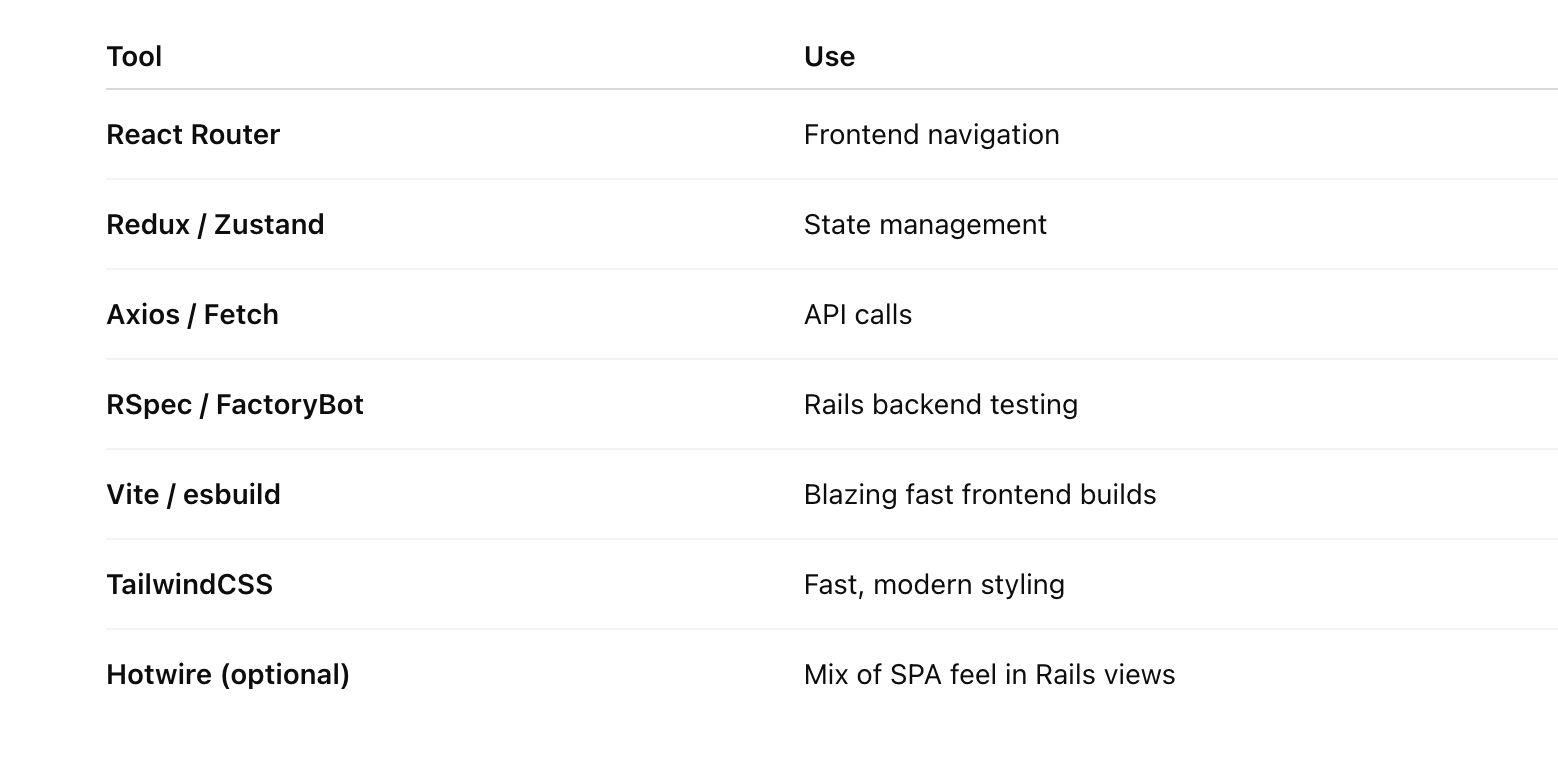🚀 Building the Future: Ruby on Rails + ReactJS Combo for Modern Web Applications 💥
🚀 Building the Future: Ruby on Rails + ReactJS Combo for Modern Web Applications 💥
“Use the strengths of each framework to build unbeatable apps.” — Every Smart Developer Ever 😎
When you blend Ruby on Rails, the beloved backend framework 🛠️, with the power of ReactJS, the modern frontend library ⚛️, you’re crafting a supercharged full-stack application that performs like a dream 🚀.
But why is this combo a favorite among modern developers? What are the integration options? And when should you use it?

Let’s dive deep! 💡
🔥 Why Ruby on Rails + ReactJS is a Perfect Match 💑
This duo brings the best of both worlds:

✅ Ideal Combo Use Case: Complex single-page applications (SPAs), dashboards, social platforms, admin panels, fintech apps, or anything needing a modern, fast, reactive interface and a reliable backend.
🧩 Ways to Integrate Ruby on Rails & ReactJS
You can integrate React with Rails in 3 powerful ways, depending on your needs:
🔗 1. Using React with Rails via Webpacker (Monolith)
✅ Best for: MVPs, small to medium apps, tight integration.
How it works:
Rails includes React as a frontend framework using webpacker. React components are rendered inside .erb views.
rails webpacker:install
rails webpacker:install:react📦 Example:
<%= javascript_pack_tag 'application' %>
<%= react_component("MyReactComponent", { prop1: "value" }) %>👍 Pros:
- Easier setup
- Tightly coupled components
- Great for teams comfortable in Rails
👎 Cons:
- Not scalable for large frontends
- Shared build pipeline
🌐 2. Rails as API-only + React as Separate SPA
✅ Best for: Large apps, microservices, mobile-first platforms.
How it works:
Rails serves as a JSON API-only backend, while React is a completely decoupled frontend hosted separately (Vite, Webpack, or Create React App).
rails new myapp --api📦 Frontend calls:
fetch("https://my-rails-api.com/posts")
.then(res => res.json())
.then(data => console.log(data));👍 Pros:
- Clean separation of concerns
- Easier scaling
- Independent deployments
- Modern frontend tooling freedom
👎 Cons:
- CORS configuration required
- More devops complexity
🧬 3. Hybrid Model (Stimulus + React)
✅ Best for: Rails teams wanting gradual React adoption.
Use Stimulus + Turbo for most Rails views, and insert React only where reactivity is critical (e.g., live charts, dynamic forms).
🔁 Use this to mix traditional Rails Turbo (Hotwire) features with isolated React components.
👍 Pros:
- Easier transition for Rails-only teams
- Minimal frontend complexity
- Balanced performance
👎 Cons:
- Might lead to tech fragmentation if not handled properly
✨ When to Use Which Integration?

💎 Power Features You Can Use With This Combo
🔐 1. Authentication
Use Devise on Rails for backend sessions, and JWT tokens or cookies to authenticate React frontend.
⚙️ 2. Real-time Updates
Use ActionCable on Rails and WebSockets in React to get real-time data (notifications, messages, etc.).
📊 3. Interactive Dashboards
Build powerful dashboards in React (using chart.js or recharts), fetch data from Rails API with pagination and filtering.
🔍 4. SEO Optimization
For SEO? Use React on Rails gem or Server-Side Rendering (SSR) techniques. Or use React only for parts where SEO doesn’t matter.
🧰 Tools to Enhance the Combo

🧠 Pro Tips
✅ Use TypeScript with React for a more robust frontend.
✅ Version your API in Rails (/api/v1/) to support future changes.
✅ Use serializers like fast_jsonapi for faster API responses.
✅ Deploy separately using services like Heroku (for Rails) and Vercel/Netlify (for React).
💡 Final Thoughts
Rails + React is not just a combo — it’s a powerhouse of productivity 💪. With proper integration, it lets you build fast, reliable, maintainable, and modern apps loved by users and developers alike ❤️.
Whether you’re building your next SaaS, internal admin tool, or a sleek consumer-facing app — this duo can handle it all.
So what are you waiting for?
Start crafting your next masterpiece with Ruby on Rails + ReactJS! ⚒️⚛️
Comments
Post a Comment